Main content
Deserts and Grasslands: What to expect
Journey to Earth's greatest wildernesses
Journey to Earth's greatest wildernesses - deserts and grasslands. Covering over 1/2 of our planet and home to the stars of the natural world, it’s here where nature puts on its most dramatic show.
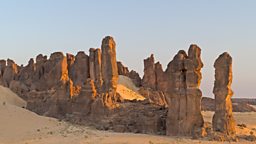
For the pre-title sequence the crew filmed vast cathedrals of rock in Ennedi Plateau, Chad. This part of the Saharan desert is thought to be less explored than parts of the moon. Nomadic people have moved with camels through this landscape for thousands of years in search of water. Something that’s reflected in the many rock art creations in this region.
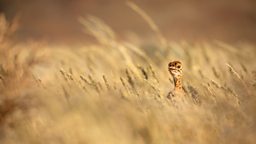
After over 40 days waiting for their brood to hatch, an ostrich family leave their nest in the searingly hot Namib desert. Over the course of a month, cameraman Ian Llewellyn gained the adult ostriches’ trust by talking to them in the same way he talks to his pet chickens. The family eventually accepted the film crew, and allowed them to film in close proximity, something that was key to revealing this intimate and dramatic stage in their lives.

A dust storm leaves the desert and collides with the city of Phoenix in Arizona, USA, home to over 1.5 million people. Filming the dust storm was one of the episode’s most ambitious challenges. Storm chasers updated the helicopter crew from the ground. Filmed during the Covid pandemic, Producer Kiri directed the sequence remotely from her bed at home in the UK in the middle of the night.
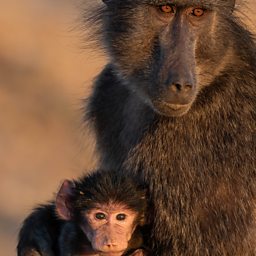
A mother baboon waits to drink from an ancient spring in the Namibian desert. She desperately needs water in order to produce milk and ensure her baby's survival.
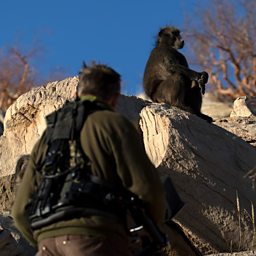
Cameraman Toby Strong films desert baboons in Nambia. The crew followed the baboons on foot every day for 1 month, carrying all camera kit in temperatures that soared over 40°C. An experience that enhanced their respect and admiration for these tough desert specialists.
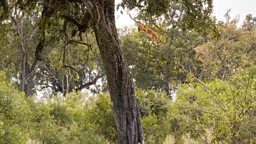
A few special leopards in southern Africa hunt in an extraordinary way, hiding up to 30ft (9m) or higher in the treetops and leaping onto unsuspecting prey. It’s a risky strategy where one wrong move, could prove fatal.

A male saiga antelope on the frozen Eurasian steppe. A bizarre looking creature that once walked alongside woolly mammoth. Their extraordinary nose helps to filter out dust and warm up the cold air before it reaches their lungs, and during the mating season it also helps gain the attention of females - for them the bigger the better! With temperatures plummeting below -30°C, Cameraman Rolf Steinmann filmed and slept in a tiny hide for 3 days to capture the spectacular battle between two male saigas. The hide was so small his feet stuck out when he lay down, and it was so cold that his food and water froze. His dedication and passion to get the shot, meant he overcame the discomfort of the frozen steppe to capture the drama.
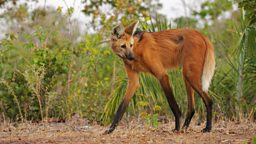
Maned Wolf (Chrysocyon brachyurus), Brazil. These bizarre looking animals eat fruit and help sustain the Brazilian cerrado grassland by spreading seeds of plants that increase fertility of the land. The Planet Earth III crew successfully captured the first images inside the den of a wild maned wolf, footage that will help efforts to help protect this endangered species. But they also filmed fires that are set to clear the habitat to make way for farming crops, most of which is used to feed livestock around the world – 50% of the cerrado has already been lost.
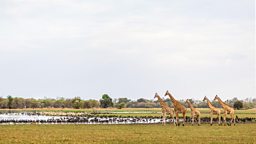
Zakouma National Park in Chad is home to one of the most spectacular gatherings of wildlife to be seen anywhere on the planet, including one of the biggest single herds of elephants in Africa.

Abakar, a ranger from Zakouma National Park has a close encounter with a wild bull elephant, a survivor of a poaching massacre that wiped out 95% of the elephant population here. The elephants are recovering and have learnt to trust again after the local rangers risked their lives to save them.
Planet Earth III continues with Deserts and Grasslands on Sunday 5th November at 6:15pm on �鶹������ҳ��� One and iPlayer
